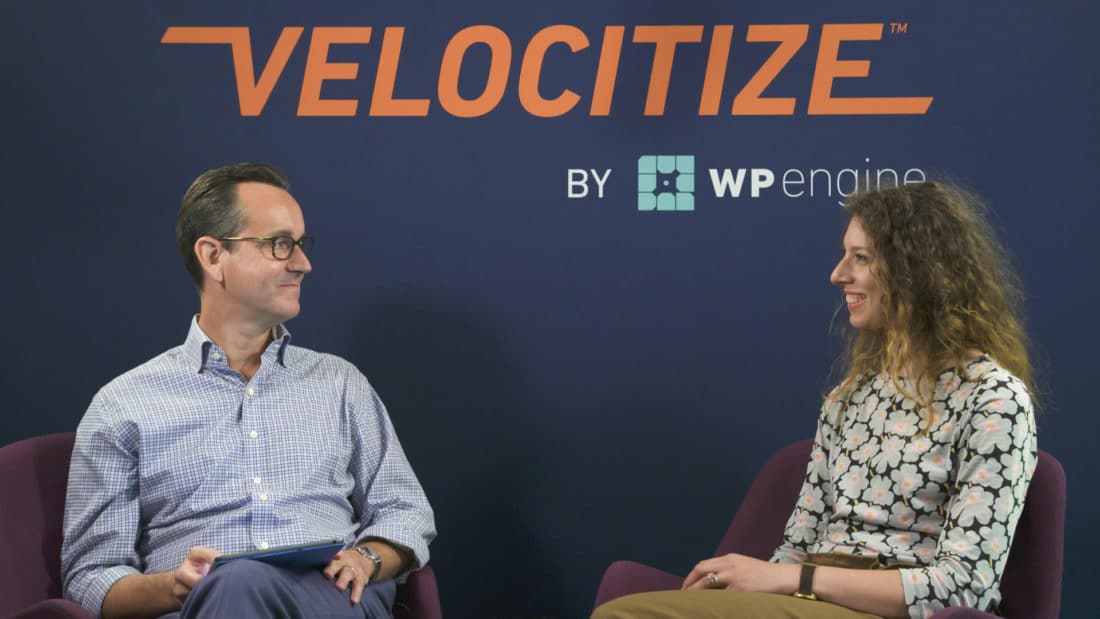“If every single day people are trying new things, sharing what they’ve learned, creating new connections, and joining dots differently—that’s an interesting road for any organization.”
Lizzie Shupak is the Co-Founder, CEO and Chief Creative Officer of Curve, a leadership and culture change organization that helps leaders develop their personal vision and skills to deliver new ideas in the real world at scale. They have brought their innovative leadership workshops, coaching, and facilitated programs to some of the world’s most well-known organizations, including HSBC, BBC Studios, and Universal.
In this episode of Velocitize Talks, Shupak discusses the power of human ingenuity and creative leadership.
Curve helps organizations facilitate workshops—what is something you observe that most companies get wrong? (1:36)
“Often companies are not really prepared to lean in, make a contribution and use workshops as they should be, which is as a change tool.”
More often than not, organizations underestimate the change that can result from exercising workshops effectively. Curve helps companies harness the full power of workshops by helping organizations establish a safe space to learn by doing.
How much time should an organization devote to experimentation, learning, and failing fast? (3:56)
“All the time. That should just be the way you work.”
Paradoxically, accepting the certainty of uncertainty empowers organizations to pinpoint improvements they need to make. The path to efficiency and growth requires embracing the messy reality of experimentation, failing fast, and learning.
You have conducted research on what creative leaders do. Can you share some insights? (5:16)
“What we were looking at was trying to break down certain terms and ways of thinking to understand them better. “
Different situations merit different models of collaboration. The environment and structure of a team differ wildly depending on the goal. For example, are you trying to collaborate to ensure quality or speed to market?
What are the best practices around organizing your workshops? (6:21)
“I like the academic definition of creativity which is novelty plus utility…It’s thinking about what is going to be useful, what success looks like, and what it means for all of our criteria to be ticked.”
One of the largest indicators of the success of a workshop is whether all the right decision-makers are in the room. The workshop can create valuable creative conflict and conversation, but if the person with the final say isn’t there, the ideas will inevitably stagnate.
How has your approach in client engagements, particularly in the light of digital space, changed over the years? (9:13)
“The most liberating thing has been stepping out of the agency disciplinary boxes and just being someone with a point of view and skills to meaningfully act and make a difference in an organization.”
Building trust and creating shared objectives with their clients has been the foundation of Curve’s success. The customers Curve works with are amazed at the genuine conversation Curve leads and cultivates, says Shupak.
Have you noticed differences in business cultures around the world? (12:24)
“The business culture in different parts of the world is so extremely different.”
Shupak works with companies around the world and experiences differences in business cultures first hand. Geographical location impacts everything from the scale of vision a CEO holds down to emailing etiquette in the office.
To learn more about Curve, check out their website.
